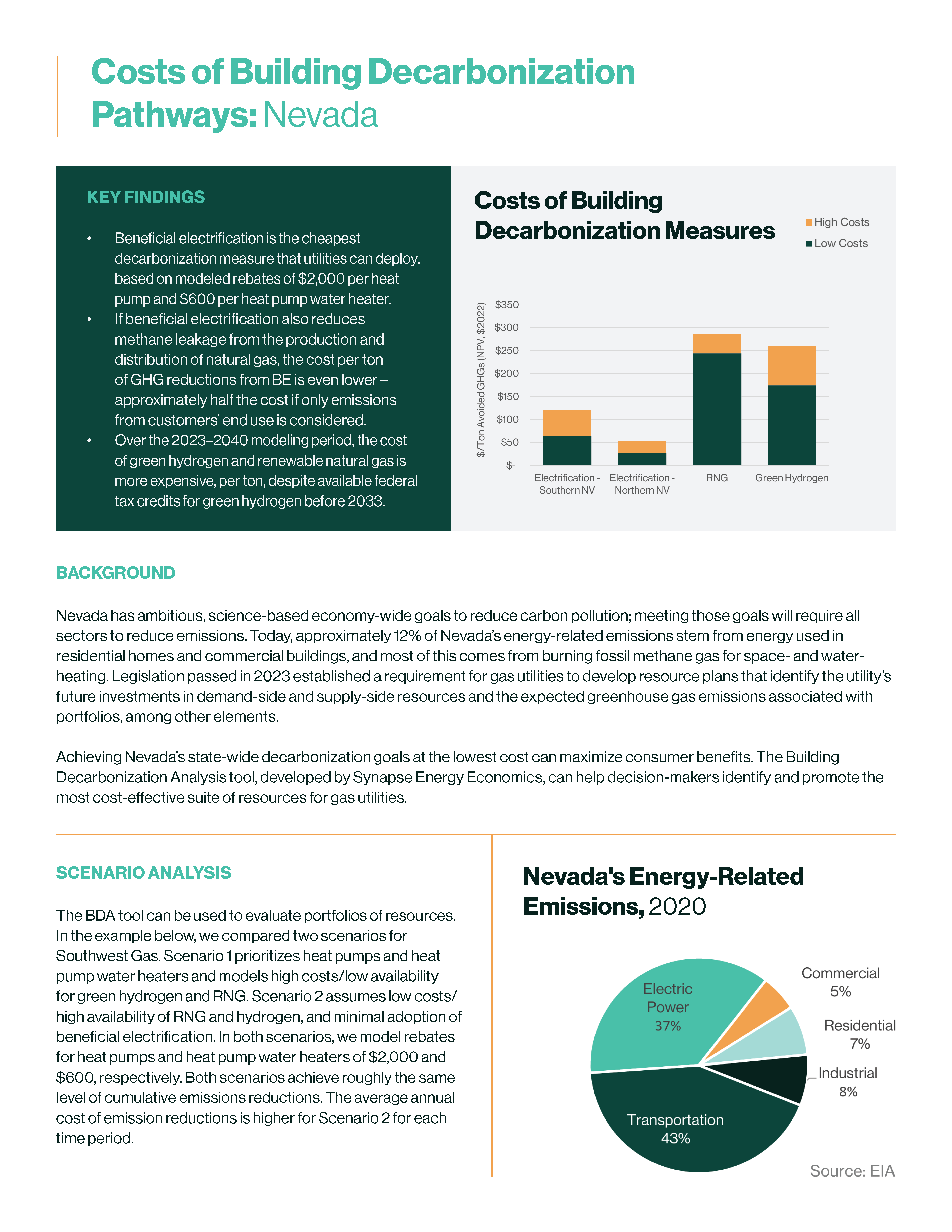To inform gas utilities and policymakers in Colorado, Nevada, and New Mexico as they assess how to meet emissions reduction targets in a cost-effective manner, Synapse Energy Economics developed an in-house tool called the Building Decarbonization Analysis tool. This tool allows users to analyze the gas utility costs and emissions reductions associated with space and water heating carbon reduction strategies from the residential building sector.
Gas utilities in the region can help decarbonize the buildings sector through support for electrification of major end uses such space and water heating and cooking. Gas utilities could also potentially replace some of fossil gas use with renewable natural gas (RNG) or hydrogen, provided that net emissions from these alternative fuels are zero or very small compared to the current fossil gas.

The spreadsheet-based analysis tool enables a user to evaluate the cost per ton of greenhouse gas emission reductions for electrification, green hydrogen, and renewable natural gas. The tool calculates the total cost and net emission reductions, including reduced gas system emissions and for electrification measures, increased emissions from the electric utility.
A user can choose many factors, including:
- the type of electrification measure
- the incentive level for electric appliances
- the performance trajectory for beneficial electrification
- the switchover temperature for hybrid heat pumps
- a methane leakage rate
- the utility’s discount rate
- the availability of green hydrogen and renewable natural gas
- the cost trajectory for green hydrogen, and the availability of tax credits

The Building Decarbonization Analysis tool assesses the costs of GHG emission reduction strategies for the residential building sector from the perspective of gas utilities. The tool can analyze the costs and emissions reduction impacts for three main carbon reduction strategies: electrification, RNG, and green hydrogen. It analyzes the potential and associated costs of annual avoided GHG emissions for each of the three GHG reduction strategies from 2023 through 2040, and it allows the user to develop portfolios composed of these three strategies.
Synapse modeled five natural gas utility jurisdictions across Colorado, Nevada, and New Mexico: Public Service Company of Colorado (Xcel Energy) and Black Hills Colorado Gas in Colorado, Southwest Gas and NV Energy in Nevada, and New Mexico Gas in New Mexico. For each gas utility, we identified an overlapping electric utility in order to assess the electric sector emissions associated with electrification.






